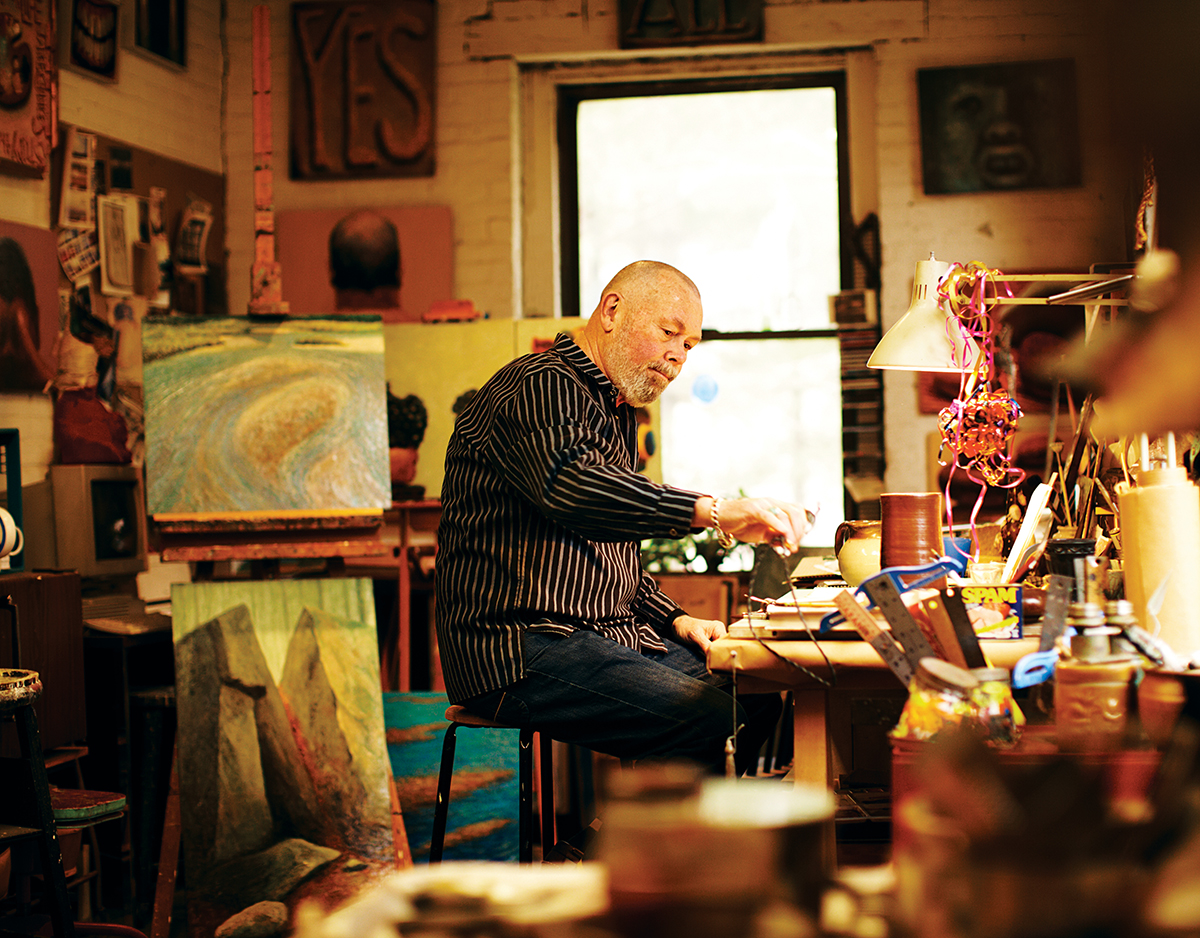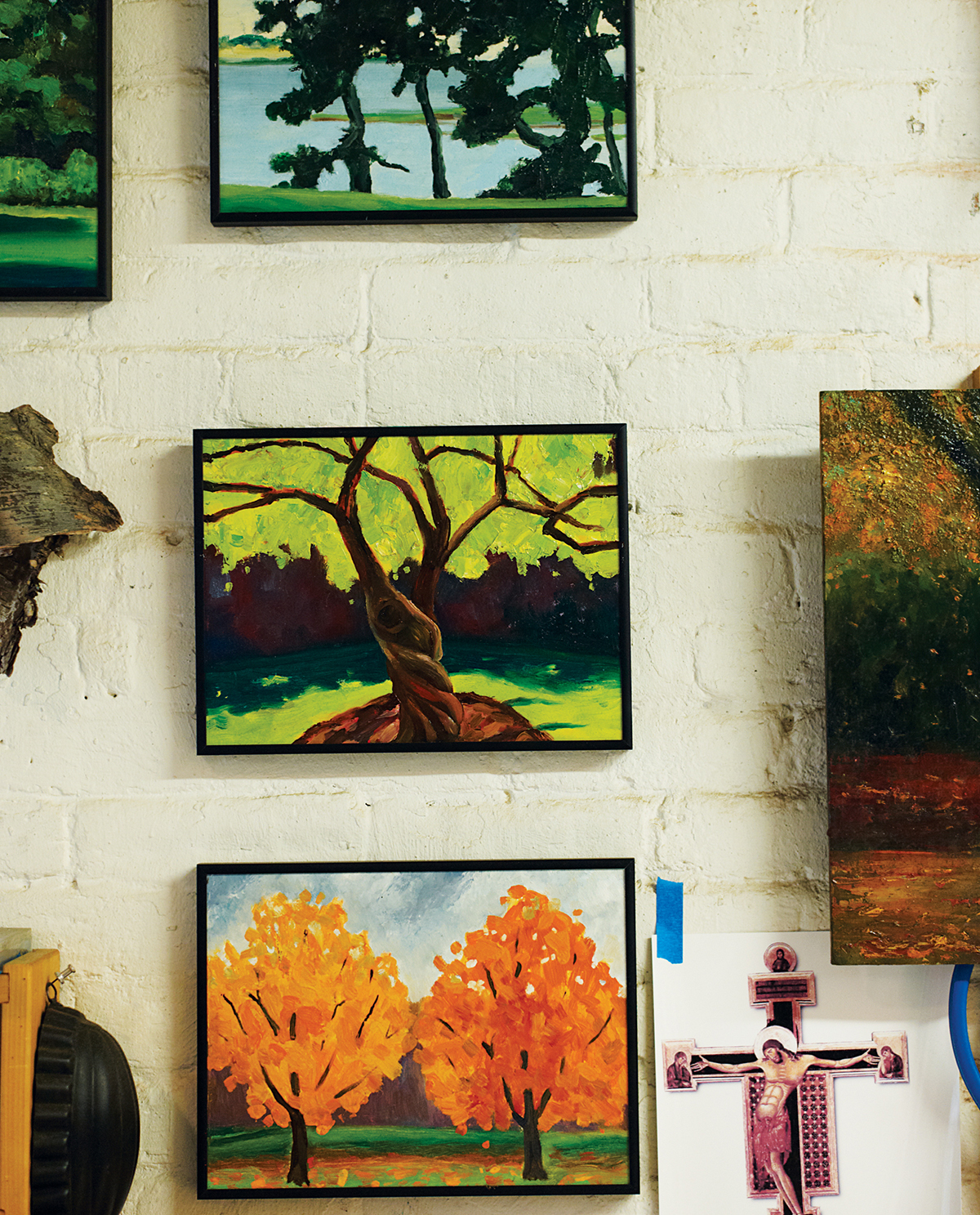A Portrait of the Artist

Across the courtyard from his studio apartment, Ken Beck works in a tiny corner atelier with plenty of north light.
“LOOK FOR THE PINK BEAR,” artist Ken Beck advises cryptically. As I wander down the long, creaky hallways of the Piano Craft Guild apartment building in the South End, what he means becomes clear: A larger-than-life painting of a pink teddy bear takes up Beck’s entire front door, and it is either charming or nightmarish, depending on your interpretation. “I never had a teddy bear,” he explains. “So I made one up.”
Inside his 900-square-foot apartment, Beck has several more bear paintings dating from the mid-1980s, part of a series he began after earning his MFA from the School of the Museum of Fine Arts. “When you graduate, you go to your own studio and you’re alone, so you need to come up with something that’s yours,” he says. “I worked with still-life objects like cake pans and cooking utensils—they don’t wilt or die—and I decontextualized them. I always wondered what someone 1,000 years from now will think of these objects. The bears were an extension of that. They are iconic, totemic, maybe a little forbidding.”
Beck’s bear period marked the beginning of his career as a professional artist, which came after he pursued several divergent vocations: He spent his formative years as a Peace Corps volunteer in the Philippines in 1963, then pursued a Ph.D. in anthropology, then worked as a management consultant at Arthur D. Little. Through it all, Beck painted. “For me, making paintings is a journey. You don’t know where you’re going, but as you go, you leave these objects behind, and you can learn from what you’ve done,” he says. Certainly in Beck’s case, life very much imitates art.

Above a watercolor palette resting on a stool in Beck’s apartment (these paints do not emit toxic fumes); middle a classic oak flat file, which provides plenty of storage for prints and drawings; below the famous teddy-bear painting that marks Beck’s front door.
He lives in what was originally the Jonas Chickering Pianoforte factory, completed in 1854. At the time, it was the second-largest building in the world, after the United States Capitol, and the first to combine every element of piano manufacturing in one place. Fascinated by its history, Beck shows me a photograph of the building on the bank of the Charles before the Back Bay was filled in. “It really puts things in perspective,” he says.
Beck moved here in 1981, several years after the edifice was developed on the cheap exclusively for artists. Both the structure and the neighborhood have changed over the decades, and so has Beck’s space, which seemed cavernous 30 years ago. Now every inch is taken up with objects like whimsical mobiles, paintings, ceramics, photographs, and tools of the trade. “People tend to think of artists as hoarders, but we’re not—we’re collectors. We collect material things.”

Above everal decades’ worth of paintings piled up in his living room; below a watercolor interpretation of Boy with Dogs in a Landscape by Titian.
Across the complex’s courtyard is Beck’s art studio—a tiny corner atelier with generous windows and high ceilings—where he works with toxic oil paints and solvents. He’s currently creating pieces for a show slated for the first half of 2012 at Gallery Naga; his work has been on display there since 1983.
All photographs by Christian Kozowyk

